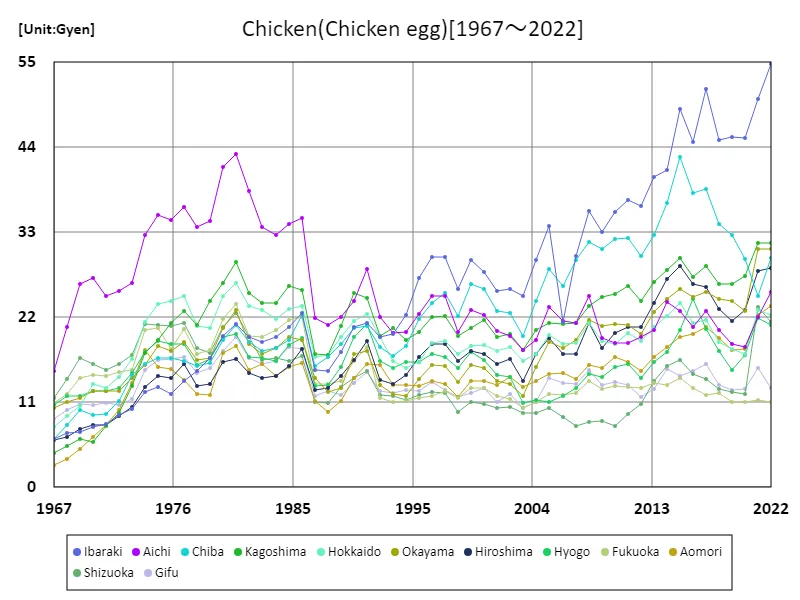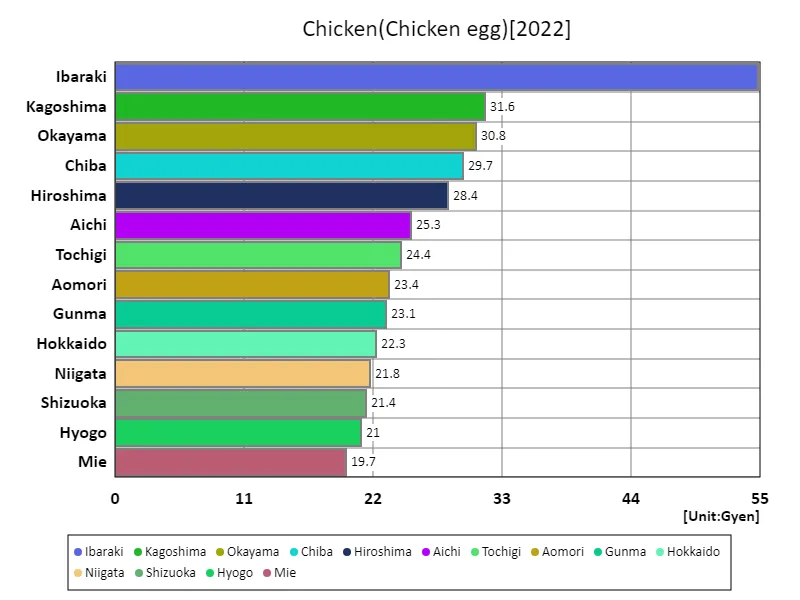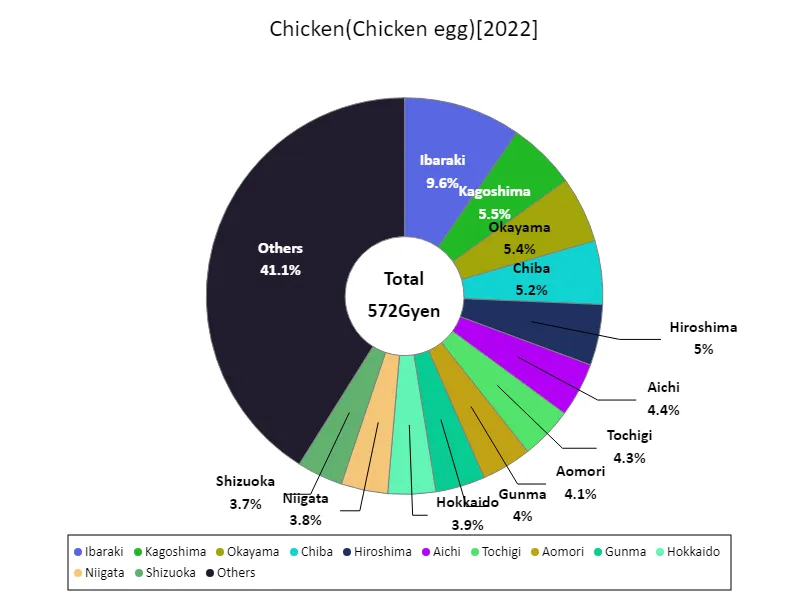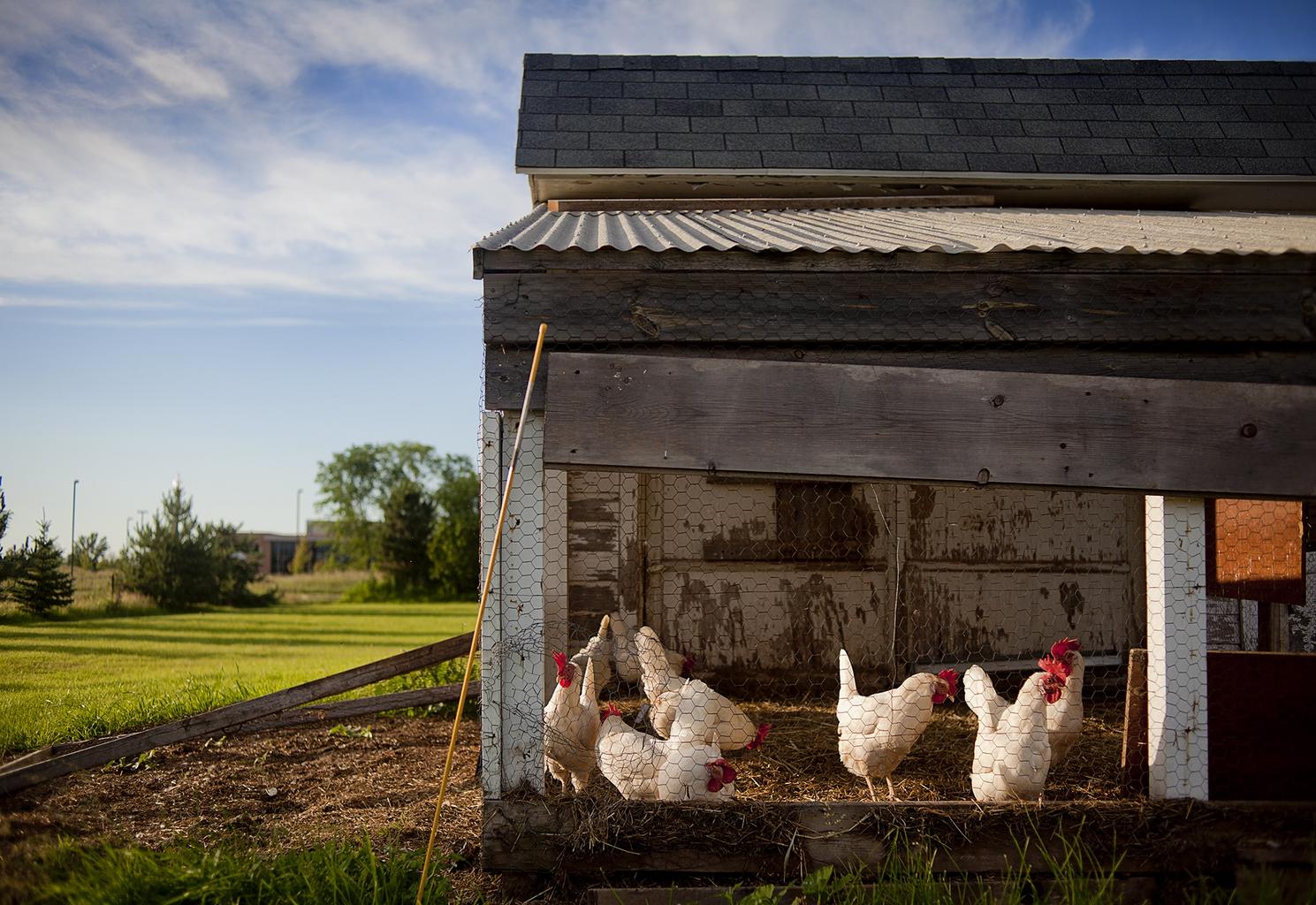Abstract
In recent years, Ibaraki Prefecture has maintained a leading position in Japan’s egg production, with a record income of 54.8 billion yen in 2022. Historically, Ibaraki has been a key player in the nation’s poultry industry, benefiting from its favorable climate and agricultural infrastructure. The trend has been toward increasing scale, with large-scale farms adopting more advanced technologies for efficiency. Additionally, consumer demand for locally sourced eggs has boosted regional production. However, challenges like feed cost fluctuations and disease outbreaks have also impacted profitability in the sector.
Chicken (egg) production income
Ibaraki Prefecture has long been a leader in Japan’s egg production, with the highest recorded income of 54.8 billion yen in 2022, maintaining a strong position at 100% of its peak. Since 1967, Ibaraki’s poultry farming has evolved, marked by increasing scale and technological advancements, enhancing productivity. Over the decades, the region has benefited from a robust agricultural infrastructure and favorable conditions for large-scale egg production. However, challenges such as rising feed costs, environmental concerns, and disease outbreaks have influenced its stability, shaping current trends in the industry.


The maximum is the latest one, 54.8Gyen of Ibaraki
Chicken (egg) production income (prefectures)
In 2022, Ibaraki Prefecture recorded its highest income from egg production, reaching 54.8 billion yen, marking a peak at 100%. This reflects Ibaraki’s dominant role in Japan’s poultry industry, supported by advanced farming technologies and efficient production systems. The region has long benefited from favorable conditions for large-scale egg farming. However, the trend also highlights ongoing challenges, including feed cost fluctuations and disease management. Despite these obstacles, Ibaraki’s egg production remains resilient, maintaining a leading position in the agricultural sector.


The maximum is 54.8Gyen of Ibaraki, the average is 12.2Gyen, and the total is 572Gyen
Chicken (egg) production income (latest year, prefecture)
In 2022, Ibaraki Prefecture led Japan’s egg farming with a record income of 54.8 billion yen, well above the national average of 12.2 billion yen. The total income from egg farming across Japan reached 572 billion yen. Ibaraki’s success is driven by large-scale, efficient farms and advanced technologies, making it a key player in the sector. Over time, egg farming in Japan has grown more industrialized, but challenges such as rising feed costs and disease management continue to affect profitability. Despite this, Ibaraki’s dominance highlights the region’s strong position in the national egg production market.


The maximum is 54.8Gyen of Ibaraki, the average is 12.2Gyen, and the total is 572Gyen



Comments